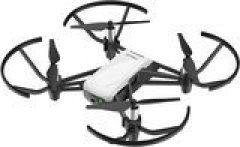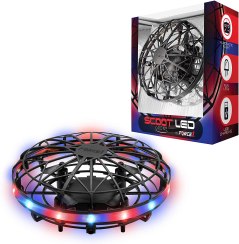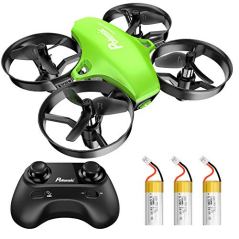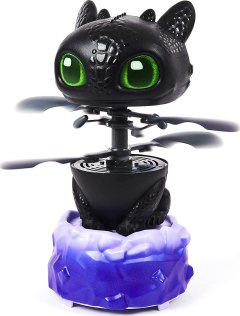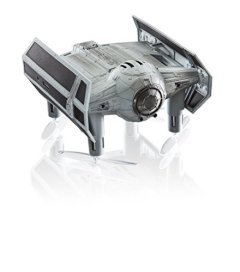Buying guide for best drones for kids
Flying drones has become a favorite pastime for people of all ages, and now these four-propeller devices are giving rise to a whole new generation of radio-controlled-drone enthusiasts. Kids like drones for their maneuverability and the height they can reach. Flying a drone can be a thrilling way to get children out from behind a screen and into the outdoors.
Inhabiting a realm somewhere between a toy and a tool, some drones simply exist for the joy of flying, while others have features like high-definition cameras that enable you to take amazing pictures while you fly.
Key considerations
Know what you’re buying
The term “drone” refers to any remote-controlled flying aircraft. Most drones marketed for kids today are variations on a quadcopter. They don’t look like airplanes or the traditional remote-controlled planes of the past even though they work similarly in principle. A handheld unit controls these battery-powered quadcopters via radio signals. The design with four propellers gives the drone a great deal of maneuverability and sometimes the ability to flip, fly sideways, and hover. These drones can also fly long distances.
Weight
The most important consideration in a drone for your child is the drone's weight. While this may seem like a small issue, many people don’t realize that a drone – even one designed for kids – is officially classified as an unmanned aircraft. The Federal Aviation Administration (FAA) has rules governing the use of drones and requires all new drone owners to register each drone that weighs between 0.55 and 55 pounds, which may include the toy you’re about to purchase for your child. It’s easy for U.S. flyers to register at the FAA’s FAADroneZone. You’ll get a registration number, which must be put on the drone. You’ll need to register the drone for your child If he or she is under 13. There are similar regulations for drones in other countries.
Distance
The distance over which a controller is able to communicate with a drone is important. One of the pitfalls of using a drone is that it can fly out of range. Some drones have a range that’s too far for most people to be able to control safely or even enjoy. Think about how far a mini drone with a control distance of about 100 feet will really go – potentially 100 feet up or 100 feet horizontally. This is farther than the size of some backyards, and even at a park, it could be far enough away that you can’t see the device with the naked eye.
Charge time vs. flight time
Most drones have rechargeable batteries. It can easily take 30 minutes to an hour to recharge the drone when the battery goes dead. To make sure the fun lasts as long as possible, choose a drone that has a short charge time and long battery life. Some drones come with an extra battery, which is also helpful.
Drone features
HD camera: An high-definition camera adds a real “wow” feature to a drone. It could be the reason your child is clamoring to get one. A drone with an HD camera can sail up over the top of the house, a game, school, or park to take bird’s-eye movies or still shots of the area. Drones with a camera are more expensive and much more likely to need FAA registration (even if your child is just using it for fun).
Variable speed: This is great for beginners because it allows kids to practice their maneuvering skills at slower speeds with less chance of crashing the drone. Kids can fly faster once they sharpen their skills.
Headless mode: Simply put, Headless mode means that there is no designated “front” side to the drone. The drone adjusts its direction relative to the controller. When the pilot points the controller left, the drone goes left, no matter which way the drone is facing. This makes the drone easier for beginners to fly.
Hover: Some drones stop flying and start to fall if the pilot lets go of the controls. The better models include a Hover function that keeps the propellers spinning to hold the drone in one spot. This means the drone can hold altitude instead of plummeting to the ground and potentially breaking.
Return: Many drones have a Return feature that allows the pilot to bring the device back to the controller with the push of one button. Considering that some relatively inexpensive drones can still fly 100 to 300 feet away from the controller, this is an important way to keep track of the drone if your child loses sight of it.
Did you know?
For drones that need to be registered, the FAA wants to know if you’re going to use the drone as a hobby or to make money (including YouTube). If you plan to use it to make money, you must be 13 years old and a registered drone pilot.
STAFF
BestReviews
Drone prices
Inexpensive
A decent starting price for a kid’s drone is between $20 and $50. This will likely be for a small drone that doesn’t require FAA registration. Key features to look for at this price point include Hover, a one-push Return button, and an alarm that alerts you if the drone is running low on battery or flying too far out of range.
Mid-range
For a little more money, about $50 to $100, you may be able to find a full-size drone with added features like a camera. Some of these models can interact with an app on your mobile device. They may also still be lightweight enough to avoid the need for FAA registration.
Expensive
Higher-priced drones, $100 and up, have some high-end features like palm control, which allows you fly the drone by waving your hands rather than using a controller, and better cameras.
Tips
Supervise your child when first learning to fly the drone. These devices do require some skill to fly and can easily end up in unretrievable places. Until you’re certain of your child’s skill, fly the drone with him or her. You don’t want the drone to get lost on its first flight.
Fly the drone in a large, open area. Drones for kids can still fly relatively high into the sky. The best choice for using one is to take it to an open area without nearby trees or buildings.
Encourage your child to be patient. Mini drones don’t cost a lot, but one can still be a little difficult to learn to use. Encourage patience in your child, and keep in mind that this toy might be a better fit when your child is older.
Buy a drone with LED lights for nighttime flying. If there is any chance your child will want to fly the drone at night, LED lights are a must-have feature and don’t usually increase the cost of a quality drone.
- Don’t forget the cool factor. If the drone is a gift for a teen, your child may enjoy the additional benefit of becoming an officially licensed drone pilot.
Other products we considered
For this guide, we’ve focused primarily on drones that are lightweight enough to not need FAA registration. If you have a teen, particularly one who has already mastered flying a small drone, you might want to consider one of the more advanced models available. The DJI Spark can fly up to 16 miles per hour, boasts a 12 MP camera, and has a range of over a mile. The Holy Stone HS700 FPV Quadcopter boasts 5G WiFi capabilities and can fly for 20 minutes without a recharge. We also like the GPS-assisted location and flight path tracking you can program into an app. It also will automatically come home when the battery is low or it’s flying too far out of range.
FAQ
Q. How old should my child be to get a drone?
A. While the low price point on many drones may tempt you to purchase one for a younger child, most list eight years old and up as an appropriate age range. Keep in mind that your child needs to have a decent amount of hand-eye coordination and that there’s always the potential to cause damage far away from your house. If the drone requires FAA registration, your child will have to be at least 13 or you must be willing to be the registered person on record.
Q. What’s the best drone for a younger child?
A. The best drone for a young child would be one designed for indoor use. These drones have a much shorter range and don’t have a camera (which tends to be one of the things that cause liability or legal issues).


